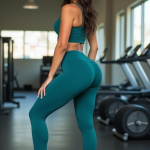Contents
Rollerblading has been a popular recreational activity for decades, and it’s not surprising why as it’s a fun way to stay active and one of the best ways to reduce carbon footprint. Whether you’re a seasoned pro or a beginner looking to try something new, choosing the right rollerblades is the key to having a safe and enjoyable experience.
How Do I Choose Rollerblades?

When selecting the perfect mens rollerblades several crucial factors include rollerblade type, size, and individual parts. As with skating techniques, comfort remains the most critical factor when selecting the right inline skates. Here’s a closer look at these essential considerations to help you find the best rollerblades for your needs.
Pick the Right Type of Skate
The right type of men’s inline skates depends on whether you are a seasoned skater aware of the kind of skates you prefer or whether you are a beginner without a clearly defined skating style. It’s also crucial to consider the surface you will skate on most frequently. Keeping these specifications in mind, you can select the type of your new skates.
Recreational

These are for all-purpose skating in parks and on the streets. They usually have four wheels, soft boots, one skate has a heel brake, and they are available in various types and styles.
Fitness
You can find fitness skates in three-wheel Triskate (often 90-110mm) or four-wheel (typically 80mm) variants made for long-distance skating. The less manoeuvrable a wheel is, the taller it is; however, a three-wheel setup’s shorter wheelbase partially compensates for this.
Freestyle/Slalom
These are typically rockered and have high manoeuvrability designs. With a rockered configuration, only two or three wheels of the skates touch the ground simultaneously due to millimetre-thin changes in wheel positioning.
That allows for a shorter wheel-base length, which makes pivoting simpler. Typically, slalom skates wear heavy boots to increase their strength in more challenging positions, like on their toes or with their feet crossed.
Speed

These skates often have more extended frames and larger wheels for superior stability and speed, sit lower on the ankle for greater flexibility and lightness, and lack a brake. Their three or four wheels may be up to 125mm in diameter.
Aggressive
With a low wheelbase, plus small wheels for manoeuvrability and to make landing from jumps easier, aggressive skates are relatively heavy. They have a ground plate that they use for tricks and sliding. You can’t use these for speed or long-distance skating since they lack a heel brake.
Artistic
Additionally, you have artistic skates, which are even further apart from aggressive skates. Initially quad skates, these are now available in an inline version. They are often rockered for smoother spinning and contain a front-toe stop to help with jump takeoffs.
Choose the Right Wheel Size and Hardness

While larger wheels are better for absorbing stress and covering greater distances, smaller wheels are better for agility and tricks. Therefore, choose a more extensive wheel if you love general fitness skating and cruising outside, whereas city skaters should select a smaller one.
The durometer rating on roller-skate wheels lets you know how hard they are. The more unbending the wheel, the higher the number. Harder wheels are better if you’re rolling around a rink or want more speed, while softer wheels are best if you require extra shock absorption while skating outside or over long distances.
Select the Right Number of Wheels
You should always be aware of the number of wheels besides the sort of wheels on your skate. Most mens rollerblades will either have three or four wheels.
Inline skates with three larger wheels often have more manoeuvrability and allow you to go faster since they raise you off the ground. Skates with four wheels have a slower speed but offer more stability. Four-wheel rollerblades are more suitable for beginners, so they’re a great option if you’re just starting out. Intermediate to advanced skaters should try out three-wheel configurations.
Opt for the Right Frame Material

Another factor affecting your skating style is the frame. A longer frame works well for long rides, while a shorter frame gives you more control over the skates. Aluminium or nylon/composite plastic are the two most frequently used materials for skate frames. Whether constructed of plastic or aluminium, this affects the frame’s quality. Aluminium frames are sturdier compared to plastic frames and can withstand more impact. Nylon is less expensive, so if you’re starting, it’s the best option.
Decide Whether You Want Heel Brake or Not
For new rollerbladers, heel brakes are crucial since they are simple to use and help riders become accustomed to stopping on their skates. Learning how to stop on your inline skates is essential for safety. Starting with a heel brake is vital unless you are proficient in at least one, preferably three, additional non-heel-brake ways that can stop you from your fastest speeds, including downhill. Without a heel brake, learning to skate is just as risky as learning to drive and only utilising the gears to stop! Skaters who are intermediate and advanced may favour a pair without one.





Comments are closed.